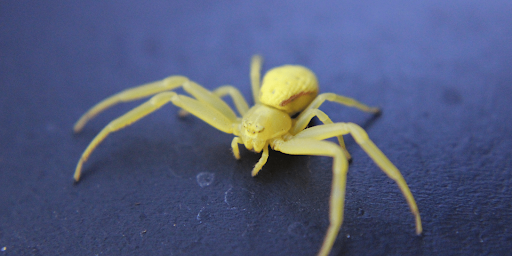
House spiders creep around the world, skittering across floorboards and lurking in the corners of rooms, giving them an ominous reputation. If you’ve ever looked closely at these creepy crawlies, you know there’s no single “American house spider.” This can leave you with plenty of questions like, What exactly is a house spider? Which one have you found in your home? Is it dangerous? In this article, I’ll tackle those questions by exploring the most common household spiders you might encounter.
What Are the Different Kinds of House Spiders?
The term ‘house spider’ confuses many people and proves quite unhelpful. As you might have guessed, ‘house spider’ serves as a common name for multiple species of arachnids (not all of them are even spiders). Additionally, some spiders that people commonly find in homes don’t have the name ‘house spider.’ In other words, many species of spiders carry the common name ‘house spider,’ while some actual house spiders don’t — even though they’re commonly considered house spiders. To avoid this confusion, I will consider every species of spider commonly found in homes for this article. I’ll list them by their scientific names first, followed by their common names.
Cheiracanthium, Yellow Sac Spider

Named for the small, sack-like structures they build, these spiders commonly inhabit garages and gardens. They belong to the Cheiracanthium family and live throughout the United States. With pale, tan-colored bodies, dark mouthparts, and yellow, milky-white, or green-tinted abdomens, these spiders resemble wolf spiders. As aggressive hunters, they search for prey on foot instead of building webs. You’re most likely to encounter them in the evening while they prowl or during the day when they hide in their sacks.
The bite of the yellow sac spider often confuses people with the brown recluse because it functions similarly, but much less severely. If a yellow sac spider bites you, you’ll feel a sharp stinging pain like a wasp sting, followed by the development of a large boil. Although these boils typically aren’t severe and heal after a few weeks, they can sometimes lead to infections.
Parasteatoda Tepidariorum, Cobweb Spider

These pests, found throughout the world and all over the United States, probably create the numerous spiderwebs around your house. People often call them cobweb spiders or cobweb weavers because they build many webs in rapid succession, leaving a trail of sticky filament in their wake. They prefer to build these webs in ceiling corners or behind furniture, choosing dark, damp locations.
These spiders display dark, yellowish bodies with large, dirty-white or brown-colored abdomens. Their most distinguishing feature is their long, stick-like legs with yellow and brown stripes. They don’t often bite, and when they do, the bite isn’t known to be medically significant.
Steatoda Grossa, Brown House Spider

People commonly confuse Steatoda grossa with the black widow, and they know it as the cupboard spider, common brown house spider, and false widow. This spider inhabits Europe, Australia, Asia, and the United States, especially on the East Coast. As its name suggests, it greatly resembles the black widow. It has the same general size (6 to 10 millimeters) and features a large, brown-black abdomen with long, dark legs. However, it lacks the widow’s bright red hourglass markings, making it distinguishable upon closer inspection.
The bite of the false widow feels similar to that of true widows but is much less severe. If it bites you, you’ll experience immediate, sharp pain, followed later by a deep ache and blister at the bite location. Reactions to bites from the false widow can vary, with reports of mild to severe nausea, headaches, and lethargy lasting for multiple days
Tegenaria Domestica, Domestic House Spider

People also know this creepy-crawly as the barn spider or domestic house spider, and you can find it throughout Africa, Asia, the Mediterranean, and, most recently, North America. Shipping containers transported it to the U.S., and it has since spread from coast to coast. You most commonly see it in barns, backyards, and inside basements and attics during the fall months.
This spider has a long, flat body with thin, hairy legs. It ranks as one of the smaller spider species on this list, ranging from 6 to 11 millimeters (just under half an inch). Its abdomen displays various colors, from pale to dark brown, peach, and greenish-brown, typically with dark splotches or speckles.
These spiders move extremely fast, are skittish, and are highly unlikely to bite. As a result, no officially documented cases of bites exist.
Eratigena Atrica, Giant House Spider

With one of the most accurate common names of any spider on this list, the giant house spider indeed appears massive, commonly growing to over 5 inches. You can find this member of the wolf spider family across Europe and Canada, but it inhabits only three U.S. states — Michigan, Washington, and Wisconsin. As a funnel weaver, it prefers dark, damp areas to weave its entrapping webs. You can commonly spot it in flowerpots, woodpiles, and mulch, as well as in darker areas of the home like crawl spaces and basements.
While its size and fearsome mandibles may seem intimidating, this spider remains highly skittish, preferring to run and hide instead of bite. As a result, people rarely experience bites, which are not known to be medically significant.
Other Spiders Commonly Found in Homes
Many species of spiders accidentally find their way inside a home, as most spiders don’t intend to invade. However, some spider species actively seek human dwellings for food and shelter, especially during fall and winter. Below, I’ll introduce you to some of the most common spider species that people find in homes, which are not typically known as ‘house spiders’.
Wolf Spiders
These spiders measure up to 1 inch long and have small, dark brown, striped bodies covered in hair. They are small, fast, and aggressive hunters that don’t spin webs. You often find them under furniture, in garages, or along baseboards. They are famous for carrying spiderlings on their backs, which scatter if you smash the adult.

Black Widow Spiders
One of the most infamous spiders out there, the black widow, features a shiny black body, a lethal bite, and a bright red hourglass marking. It hides in cluttered, secluded places like garages or sheds. Its strong, painful bite has made it the poster child for venomous spiders. People usually want to get rid of black widows to avoid their bites. While fatalities are rare, widow bites affect the nervous system, and some individuals may experience severe reactions.

Hobo Spiders
Common in the Northwestern portions of the United States, the hobo spider poses a nasty encounter. This type of funnel-web spider seeks out locations with soil, rocks, and dirt to build its webs. It displays a yellowish-brown coloration with two vertical stripes down the center of its body and has a mottled abdomen in brown, yellow, or gray. Some people state that the hobo spider’s venom resembles that of a brown recluse, while other experts argue that the bite is not overtly harmful, only highly painful. I recommend approaching these spiders with caution, as they tend to bite defensively

Cellar Spiders
Cellar spiders, the most common house spiders on this list and also known as daddy longlegs, feature long legs and either small dot-like or tear-drop-shaped bodies. You can commonly find them in cellars, attics, closets, and other dark, secluded locations, often accompanied by small egg sacs. While these spiders are pervasive, they remain completely harmless.

Brown Recluse Spiders
This spider delivers one of the nastiest bites on this list, which might make you want to remove brown recluses from your home. It has a milky white abdomen, a central body with a fiddle-like marking, and long, thin legs. Its bite injects dermonecrotic venom, causing cell death and resulting in painful lesions. While not aggressive, these spiders bite when pressed against the body, so you should seek immediate medical attention for any bite.

Final Thoughts
Spotting a spider in your home might be unsettling, but remember, most house spiders are harmless and even help control other pests like bed bugs and flies. They prefer to stay out of sight and focus on hunting insects rather than causing harm to you or your family. By keeping your home clean and clutter-free, you can reduce their hiding spots and keep their numbers in check.
However, when the weather cools down in the fall and winter, spiders often seek shelter indoors, leading to potential infestations. If you notice too many spiders making themselves at home, I recommend calling a pest control expert. They can help manage the problem effectively, so you don’t have to deal with the overwhelming task on your own.
Frequently Asked Questions
Are house spiders harmful?
While most household spiders pose no threat, a few species can inflict venomous bites that may be harmful to both pets and humans.
Do house spiders avoid you?
Yes, house spiders generally prefer to avoid humans. They seek to hide or camouflage themselves, using their sensory hairs to measure your size and focus on catching prey instead of interacting with you.
Where do house spiders live?
House spiders can be found in various locations, including attics, closets, and under furniture within homes. They also inhabit outbuildings like garages and sheds, cluttered areas such as basements, and even under sinks where they can access water.






Leave a Reply